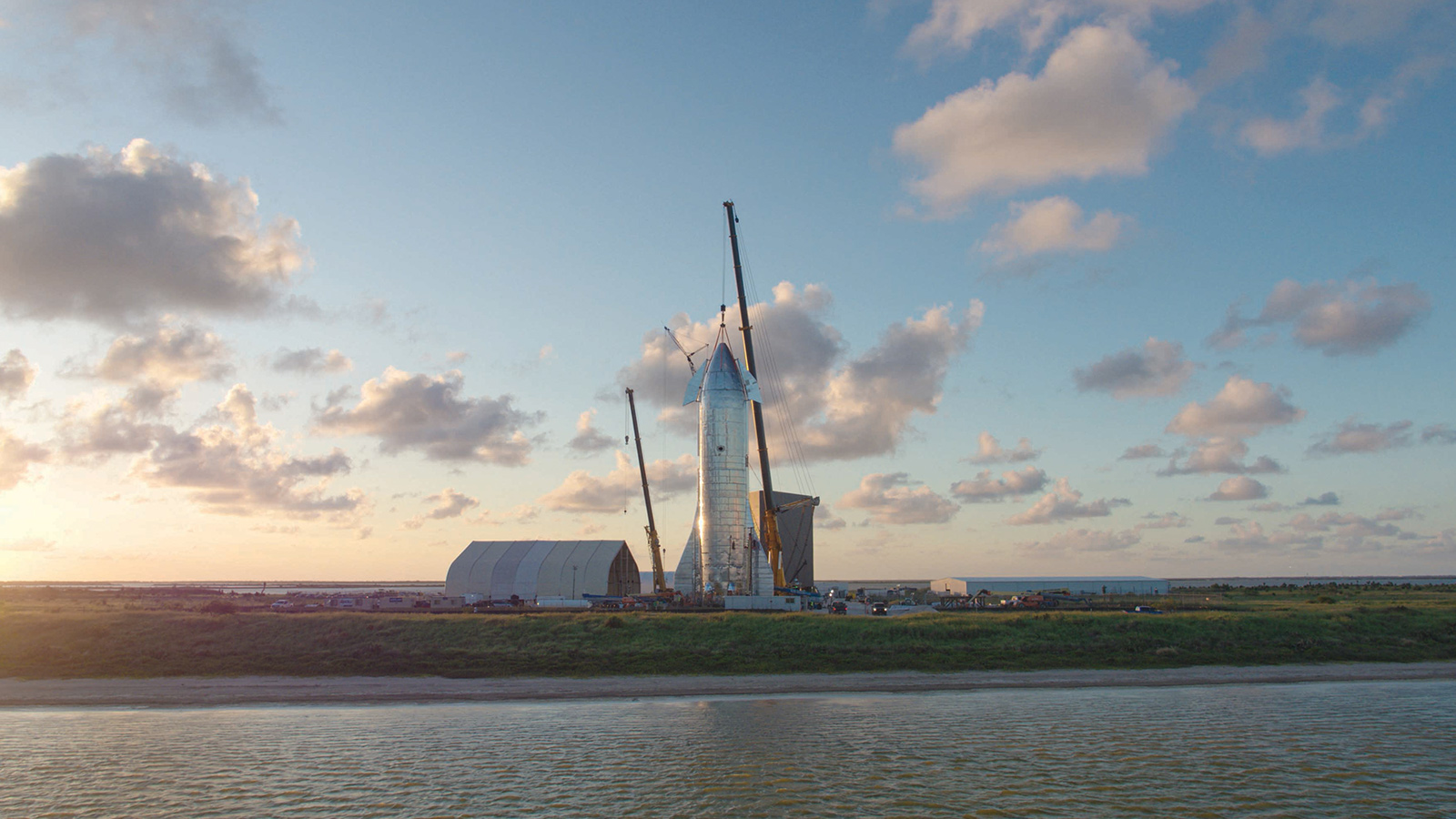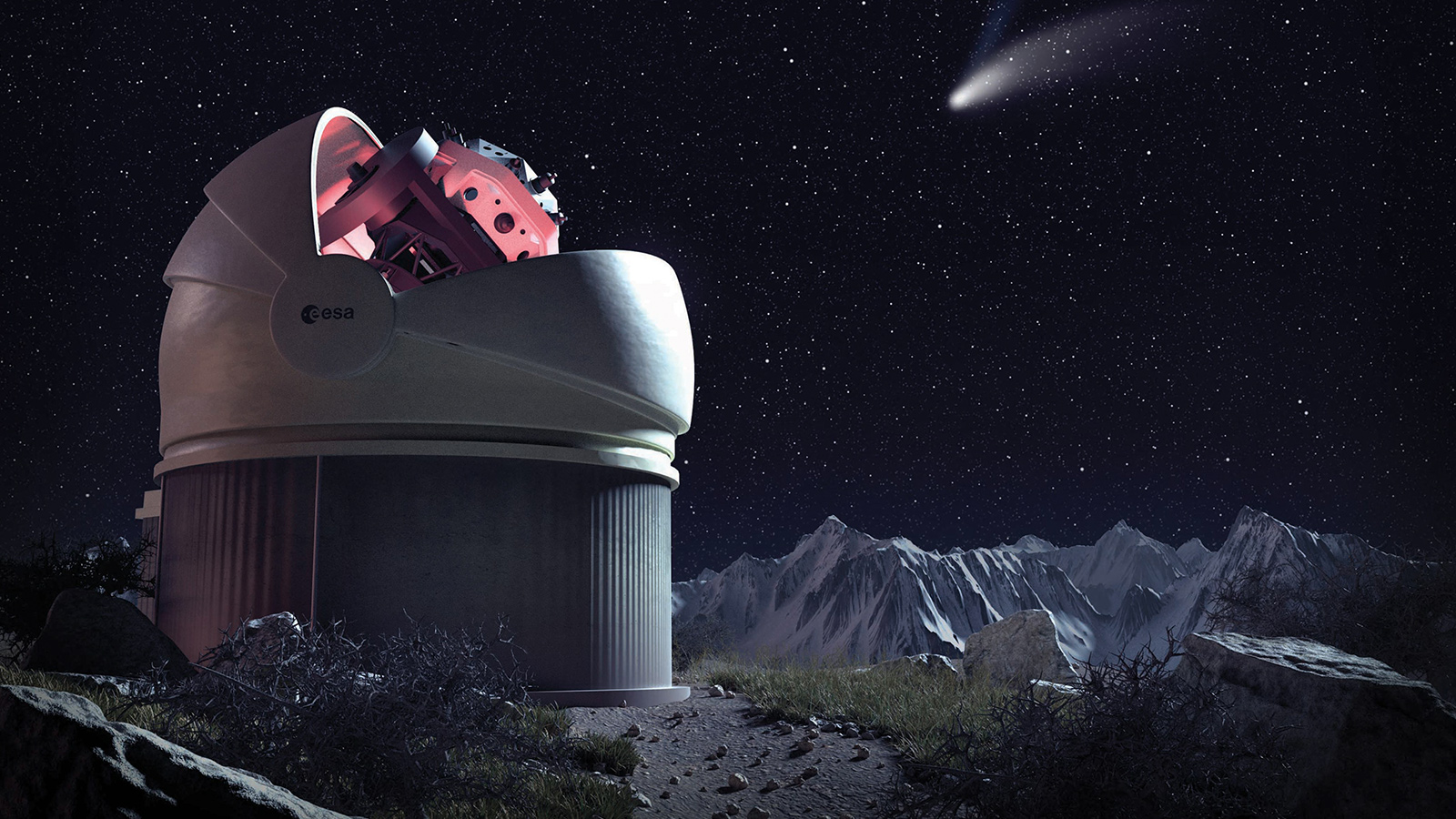Stay Up to Date
Submit your email address to receive the latest industry and Aerospace America news.
Defending Earth from “city killer” asteroids will require a partnership between governments and the burgeoning commercial space industry. Retired NASA mission planner Don A. Nelson makes the case.
Americans would rather stop asteroids from hitting Earth than go to the moon or Mars, according to a poll published last June by the Associated Press-NORC Center for Public Affairs Research at the University of Chicago. The potential for a cataclysmic asteroid impact on our home planet is so credible that NASA established a Planetary Defense Coordination Office in 2016 to coordinate efforts of U.S. agencies, international counterparts, and professional and amateur astronomers around the world. The European Space Agency also established a Near-Earth Object Coordination Centre that conducts searches for near-Earth asteroids.
To date, approximately 20,000 near-Earth asteroids have been discovered, of which 800 have been classified by NASA as possible impact risks, because they are greater than 500 feet (152 meters) in size and their orbits bring them within 4.7 million miles (7.6 million kilometers) of Earth’s orbit.
The trouble is, size alone doesn’t determine destructive power. The density and the angle of entry into the atmosphere determine how much kinetic energy is generated. It is these small asteroids that are the most concerning. They impact Earth at a greater frequency and far too often are not discovered until a few days before their impact.
The small undetected asteroid that broke up over Chelyabinsk, Russia, on Feb. 15, 2013, created a shock wave that shattered glass and injured about 1,200 people. It would have been far worse if it had been an iron core asteroid with a high entry angle into the atmosphere. Or consider Asteroid 2008TC3, estimated to be 4 meters and discovered the day before it broke up on Oct. 7, 2008, and scattered at least 600 extremely hot fragments over the Nubian Desert. Had this occurred over a dry forest region, the outcome would have been far different.
Or last March, BBC News reported that a “space rock” exploded in the atmosphere the previous December but that the event went largely unnoticed because the explosion was over the Bering Sea. Last July, our planet reportedly had a near miss with a city-killer asteroid.
And yet, on its Planetary Defense webpage, NASA says, “No known asteroid poses a significant risk of impact with Earth over the next 100 years.” The statement is true, but the key word is “known.” Surprises from smaller asteroids happen fairly regularly.
Consider these questions: Is there a credible asteroid threat that requires the immediate development of a planetary defense system? Can the requirements for the system be defined? Can this system be built and operated without significant government funding? This old retired NASA engineer believes the answer to each of these questions is yes.
The three requirements for the defense system are: rapid deployment, reliability and affordability. Such an asteroid defense system must be able to detect the threat, provide rapid access to inspect the object and categorize the degree of danger and the ability to neutralize it.
It would be cost prohibitive for the U.S. and partner governments to develop stand-alone launch vehicles and deflection devices for this purpose. Rather, the need for planetary defense must be a participating part of the developing 21st-century commercial space transportation system programs. For cost-effective and reliable commercial space operations, the private-sector transportation system must include reusable launchers and space tugs based in orbit. These vehicles will for that reason meet the defense system requirements for rapid launch and access to the threat. Future civil, military and commercial satellites in addition to their primary function could be equipped with sensors to identify asteroid threats. Since there are no new technology requirements demanded of the vehicles for planetary defense, they can be developed by the private sector with minimum or no government funding.
Rapid deployment can be achieved only with reusable launch vehicles. There may not be an inventory of expendable launchers available when an asteroid threat is discovered. Also, expendable launchers cannot achieve the required reliability because of undetected manufacturing errors on vehicles whose first flight is the only flight. Reusable launchers and space-based vehicles have the potential to achieve a failure rate equivalent to commercial aircraft.
Affordability is a function of flight rate and launch operations costs. Where operations cost will be a fixed value, flight rate will be a function of the economy and missions needed. To stay in business there must be significant flight rate to cover operations overhead. This may require a business model similar to the one considered by Lockheed Martin for its 1990s-era VentureStar reusable, commercial launch vehicle proposal. One cost estimate for the fleet was $8 billion in 2014 dollars. NASA and other U.S. government customers were expected to guarantee a specific number of payloads or launches. Unfortunately the VentureStar had unsolvable development problems. It remains true, however, that reusable launchers must be used to contain operations costs.
There are two launcher concepts that can meet the cost and rapid-deploy requirements for commercial operations and planetary defense: the SpaceX Starship vehicle (formerly the Big Falcon Rocket) and a space shuttle-inspired freighter concept that I and others have advocated. In my opinion, both concepts should be developed.
SpaceX recognizes the importance of reusability. The company’s Starship vehicle will consist of a first stage called the Super Heavy rocket that will return and land on six legs, plus a reusable second stage, the Starship spacecraft. Together they are being sized for service to orbit and deep space missions to Mars, with the launch pad height approximately that of the Saturn V. Super Heavy would be powered by 35 Raptor engines powered by subcooled liquid methane and liquid oxygen. Starship will provide passenger, cargo and tanker service to orbit and beyond. SpaceX has an ambitious first launch date of 2020. It will incorporate design components from the highly successful Falcon launch vehicle program.
The Commercial Space Shuttle, or CSS, Freighters would be designed to: support near-Earth space transportation requirements, provide the capability to deploy payloads for deep space exploration and support humanity’s need to obtain deep space resources. Its payload landing capability makes it unique for this requirement.
These freighters would incorporate the many existing technologies that can correct the deficiencies of the space shuttle fleet that was decommissioned in 2011. The launch cost will be significantly lower than those of an expendable launch vehicle, primarily because of increased reliability, no continuous manufacturing overhead and lower insurance costs for the CSS freighters (for more information, see www.spacetran21.org).
Each CSS freighter will incorporate the airframe profile of the shuttle orbiters, but unlike the orbiters, a CSS will operate autonomously. Passengers will be flown only on missions requiring their presence. For these missions, they will be provided escape pods for launch, on-orbit and entry anomalies. Launch pad assembly of the freighter will reduce operations cost and turnaround time. Rapid turnaround is a freighter feature that reduces operations’ cost, provides the capability for timely intercepts of threating asteroids and supports U.S. Air Force rapid-deploy mission requirements.
Space-based tugs, first proposed in the 1990s, would be an essential element for a cost-effective 21st-century space transportation system. When a dangerous asteroid is spotted, a tug could be dispatched to classify its composition and provide the delivery systems for deflection or destruction. NASA’s Marshall Space Flight Center in Alabama and the Russian Space Agency had concepts, but the lack of an affordable launch vehicle prevented their development.
There are several options for asteroid-detection satellites. NASA in 2015 picked a proposed space telescope called NEOCam for study. It would survey the sky for potentially hazardous asteroids and gather infrared light to characterize their physical properties, such as diameters.
Another option would be to place asteroid-detection sensors on satellites with multifunctions. Consider, for example, Europe’s Gaia satellite which is the process of mapping the positions and movements of the stars to create a 3D map. Gaia also watches for asteroids, and it has discovered three previously unknown ones. This supports the notion that asteroid detection can be one of many functions of a satellite mission and would not have to drive up manufacturing and operating costs. Gaia also shows that asteroid detection can and must be an international project.
NASA is correct in that there are no known city-killer asteroids. However, the alarming increase in near-Earth asteroids that whiz dangerously by is a warning sign that asteroid planetary defense must not be ignored. The technology exists to develop an asteroid planetary defense system supported by the commercial space programs. The only lacking element for an asteroid planetary system is leadership.
Related Posts
Stay Up to Date
Submit your email address to receive the latest industry and Aerospace America news.





